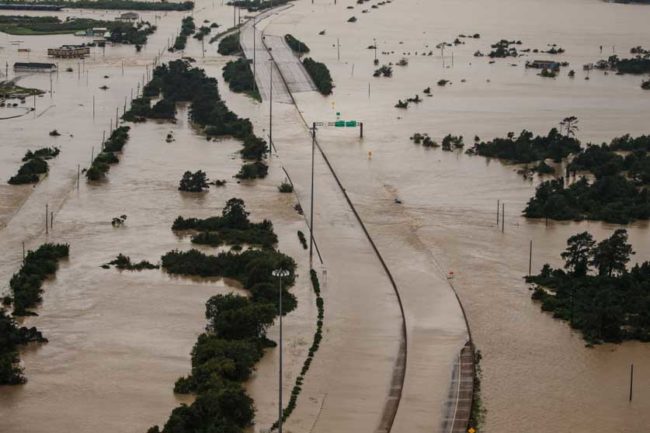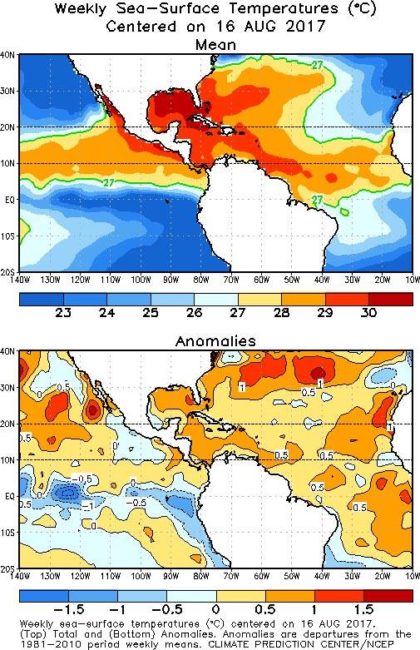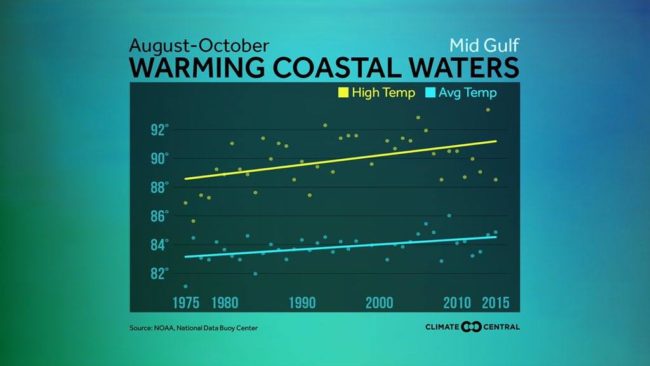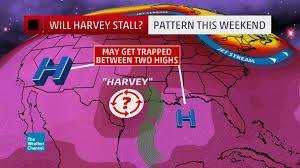
It is inevitable that when a major weather event such as #Harvey occurs that the topic of Climate Change will be debated. Harvey has been no exception to this and so once again the debate arises. After Katrina over 12 years ago a common thought that prevailed at that time was to not attribute one specific event as a manifestation of climate change. This is because weather and climate are not the same thing. Extreme events will happen and so identifying climate change as causal is dubious. While this observation remains true, what is now also becoming clearer is that extreme weather events such as Harvey are indeed made a lot worse specifically because of Climate Chance – there is a relationship here.
Well known Climate Change subject matter expert Michael E Mann, posted to Facebook a very clear description of exactly why this is true. One key point, he does not simply express an opinion, but cites references to back it all up.
Michael E Mann’s Posting
The original posting on his FB page is via this link. I’m citing it is full because it is the clearest most concise explanation of this relationship that I have found …
What can we say about the role of climate change in the unprecedented disaster that is unfolding in Houston with Hurricane #Harvey?
There are certain climate change-related factors that we can, with great confidence, say worsened the flooding.
Sea level rise attributable to climate change (some is due to coastal subsidence due to human disturbance e.g. oil drilling) is more than half a foot over the past few decades (see http://www.insurancejournal.com/…/sou…/2017/05/31/452704.htm for a decent discussion).
That means that the storm surge was a half foot higher than it would have been just decades ago, meaning far more flooding and destruction.
In addition to that, sea surface temperatures in the region have risen about 0.5C (close to 1F) over the past few decades, from roughly 30C (86F) to 30.5C (87F), which contributed to the very warm sea surface temperatures (30.5-31 C or 87-88F). There is a simple thermodynamic relationship known as the “Clausius-Clapeyron equation (see e.g. https://en.wikipedia.org/…/Clausius%E2%80%93Clapeyron_relat…) that tells us there is a roughly 3% increase in average atmospheric moisture content for each 0.5C (~1F) of warming. Sea surface temperatures in the area where Harvey intensified were 0.5-1C warmer than current-day average temperatures, which translates to 1-1.5C warmer than the ‘average’ temperatures a few decades ago. That means 3-5% more moisture in the atmosphere.
That large amount of moisture meant the potential for much greater rainfalls and greater flooding.
The combination of coastal flooding and heavy rainfall is responsible for the devastating flooding that Houston is experiencing.
Not only are the surface waters of the Gulf unusually warm right now, but there is a deep layer of warm water that Harvey was able to feed upon when it intensified at near record pace as it neared the coast. Human-caused warming is penetrating down into the ocean warming not just the surface but creating deeper layers of warm water in the Gulf and elsewhere.
So Harvey was almost certainly more intense than it would have been in the absence of human- caused warming, which means stronger winds, more wind damage, and a larger storm surge (as an example of how this works, we have shown that climate change has led to a dramatic increase in storm surge risk in New York City, making devastating events like Superstorm #Sandy more likely (http://www.pnas.org/content/112/41/12610.full).
Finally, the more tenuous but potentially relevant climate factors: part of what has made Harvey such a devastating storm is the way it has stalled right near the coast, continuing to pummel Houston and surrounding regions with a seemingly endless deluge which will likely top out at nearly 4 feet of rainfall over a several days-long period before it is done.
The stalling is due to very weak prevailing winds which are failing to steer the storm off to sea, allowing it to spin around and wobble back and forth like a top with no direction. This pattern, in turn, is associated with a greatly expanded subtropical high pressure system over much of the U.S. right now, with the jet stream pushed well to the north. This pattern of subtropical expansion is predicted in model simulations of human-caused climate change.
More tenuous, but possibly relevant still, is the fact that very persistent, nearly ‘stationary’ summer weather patterns of this sort, where weather anomalies (both high pressure dry hot regions and low-pressure stormy/rainy regions) stay locked in place for many days at a time, appears to be favored by human-caused climate change. We recently published on this phenomenon: https://www.nature.com/articles/srep45242
In conclusion, while we cannot say climate change “caused” hurricane Harvey (that is an ill-posed question), we can say that it exacerbate several characteristics of the storm in a way that greatly increased the risk of damage and loss of life.
Climate change worsened the impact of Hurricane Harvey.
Further Reading
- Chris Mooney Covers the topic within a Washington Post article
- Insurance Journal: Coastal Texans Concerned About Rising Sea Levels Amid Hurricane Threats
- The Wikipedia page on the Clausius–Clapeyron relation
- 2015 Peer Reviewed paper in PNAS: Increased threat of tropical cyclones and coastal flooding to New York City during the anthropogenic era
- Michael E Mann’s 20017 paper in Nature: Influence of Anthropogenic Climate Change on Planetary Wave Resonance and Extreme Weather Events
- George Monbiot writing in the UK’s Guardian: Why are the crucial questions about Hurricane Harvey not being asked?
- Vox: Harvey is part of a pattern of extreme weather scientists saw coming. They’re still shocked.



